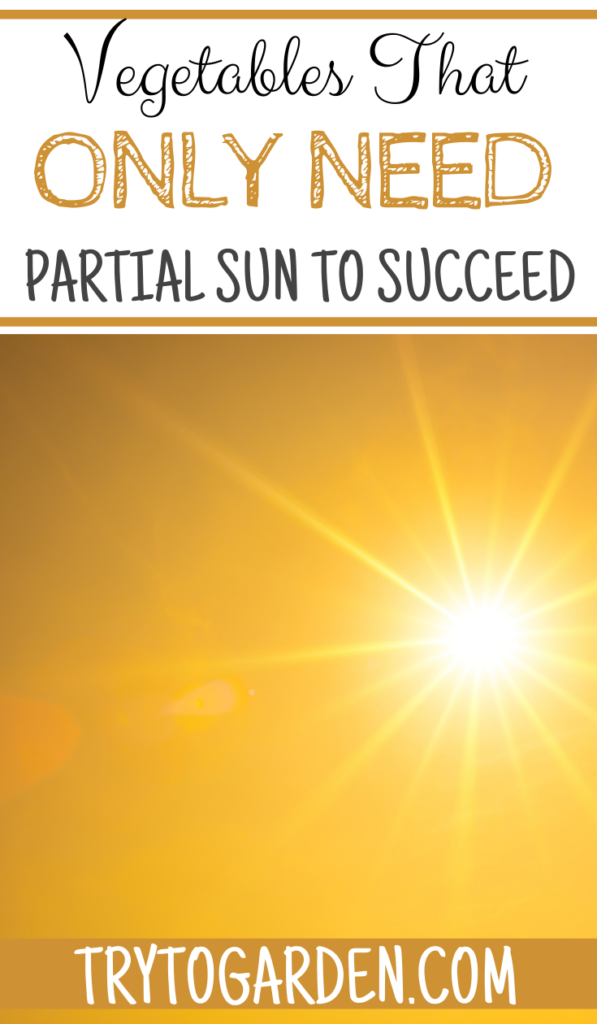This post contains affiliate links, which means I will make a commission at no extra cost to you should you click through and make a purchase. As an Amazon Associate I earn from qualifying purchases.
If you want to grow more food at home, but you don’t have the option for a full vegetable garden in your backyard, the lack of sun is often the biggest issue. Vegetables That Only Need Partial Shade are more common than you might think!

While many vegetables do need as much sunlight as possible, others do okay with just partial sun and partial shade. This is often when you grow them on your patio or balcony, in your sunroom, or even right in your kitchen.
Vegetables That Only Need Partial Shade
Here are some of the best vegetables that can grow with only partial shade.
Beans
The first vegetable you can grow on your patio or in your backyard with just partial sun and partial shade is beans. However, you need to consider what types of beans you have.
The beans that are on a vine are fine with just partial sun, where they are shaded for part of the day. These would be the ones on a trellis. With the beans that are in bushes, try to give them at least 6 hours of sun per day.
Broccoli and Cauliflower
Both broccoli and cauliflower can survive with partial shade during the day. Broccoli actually shouldn’t have full sun all day because it can ruin the flavor. What happens is that it leads to a high amount of flowering, which can decrease the taste of the vegetable. This does better with partial shade during the day, slowing the flowering process.
Cauliflower is similar to broccoli, where you want it to flower a little slower. Keep the sun exposure to no more than 6 hours a day.
Cabbage
If you want to grow greens on your patio or in the backyard in a shaded area, cabbage is your best bet. Cabbage doesn’t want a lot of sun, as it can dry out the vegetable. This occurs when it has bigger leaves and smaller heads of cabbage, overwhelming the vegetable itself. It is ideal for a partial sun and partial shade area.
Vegetables That Only Need Partial Shade: Beets
Are beets a family favorite? If so, you will be happy to know you can grow them in partial shade. Beets are actually beginner-friendly as well, so if you’re trying to grow vegetables on a patio or in a sunroom where it only gets partial sun, these are good to start with.
They should preferably be partially shaded, even when you are growing them in drier conditions.
Radishes
This cool-season crop will need partial shade to grow in warmer weather. Radishes are a great crop to succession sow and can be enjoyed for both their roots and foliage.
Turnips
Turnips generally require a full sun location but will tolerate partial shade, especially if you plan on harvesting the plant for its greens.
Vegetables That Only Need Partial Shade: Coriander
Coriander, or as it is known as Cilantro, will quickly bolt and set seeds under the hot sun, so this herb actually prefers a little shade. Grow it directly from seed after the chance of frost has passed, cilantro develops a large taproot and hates being transplanted. OK, so this is really an herb, but it is a pretty key ingredient for any salsa garden.
Carrots
Root vegetables, such as beets, carrots, and potatoes will grow in partially shaded areas that have less direct sunlight but will appreciate at least a half-day of full sun and some partial shade.
Onions
Most onions require full sun to partial shade, that includes bunching onions too!
Peas
For optimal growing results, peas need to be planted in an area that receives at least six to eight hours of full sunlight exposure daily. Pea plants will tolerate partial shade but they will grow slower than they otherwise would in a full sunlight location.
If you have a yard that doesn't get full sun, have no worries! All of those gems we mentioned should still work in your garden.
